A frog holding a taro-leaf umbrella. A parade of frolicking animals. An Ukiyo-e style Mount Fuji. Giant waves. A Japanese artist who goes by the name Lito carves these delicate designs on fallen leaves, giving life back to them.
The world of Lito’s delicate art, which he began in 2020 and posts on social media almost daily, has won fans from around the world. The leaf art has also given him solace after earlier struggles with attention-deficit hyperactivity disorder, and a purpose in life — the joy of making people happy with his art.
He enjoys working at night. From a pile of leaves treated with a wrinkle-free chemical, he picks one and places it on a cutting board.
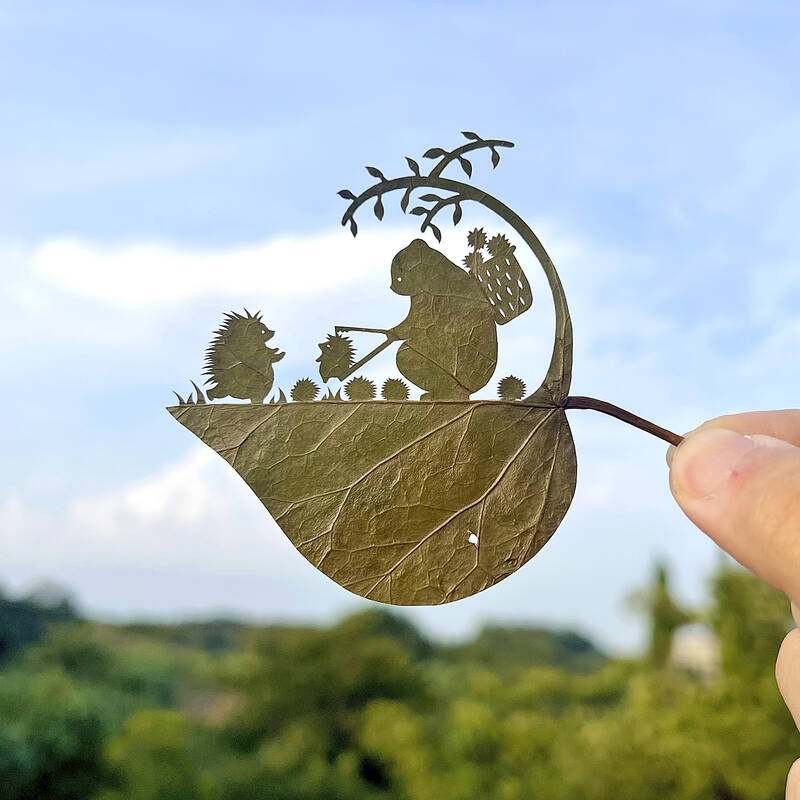
Photo: AP
First, he outlines the design on the leaf with a pen in his right hand. Then he takes a design knife in his left hand and starts cutting the leaf carefully. Slowly, the leaf begins to take the shape of a frog carrying an umbrella — a simple design he recently demonstrated.
More complex, highly intensive work on a single leaf can take more than eight hours to complete.
His leaf-cutting works include titles such as Scrolls of Frolicking Animals, Leaf Aquarium, and Thirty-six Views of Mt. Fuji: The Great Wave off Kanagawa. Each piece includes his own twists, and often uses animals.
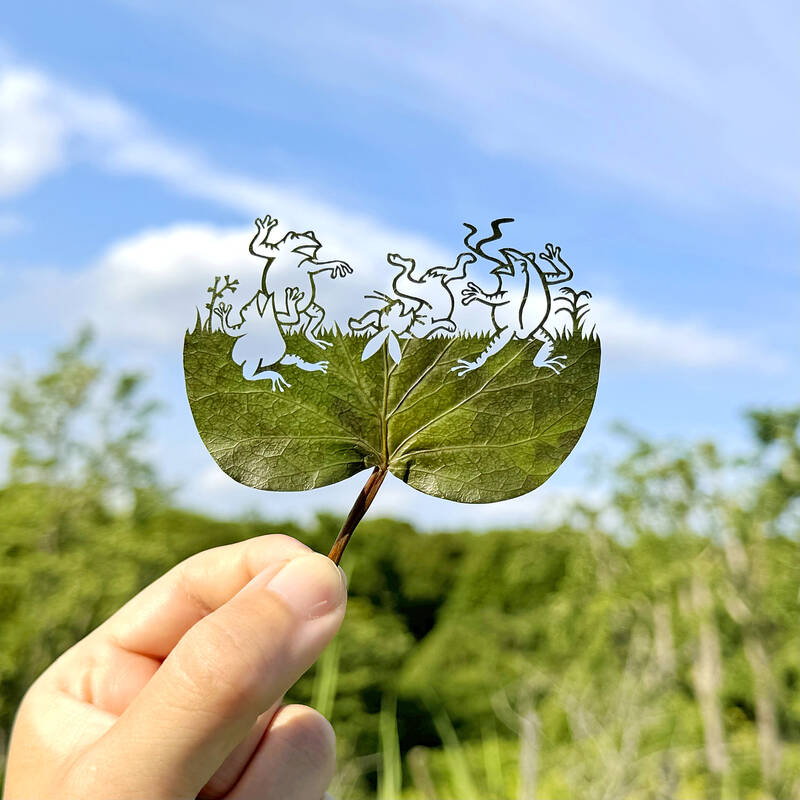
Photo: AP
“I would rather finish it in one go when I am focused,” Lito, 38, said. He didn’t want to disclose his real name for personal reasons.
Since his childhood, Lito says he has had high levels of concentration and patience. But he had trouble fitting into what was considered the norm at school or at work, despite all his efforts. He struggled to interpret others’ feelings and to avoid confrontations.
After years of difficulty, he went to a hospital at age 30 and was told he has ADHD, a diagnosis that he felt explained why he has always done things differently.

Photo: AP
He saw no point in forcing himself to do things the same way as other people, and began to adjust his life.
In early 2020, Lito came across the art of leaf cutting. He saw it as the perfect use of his patience and concentration.
Word of his skills has spread across social media, and he has published books on his leaf-cutting work. He holds a near monthly solo exhibition in various places in Japan.
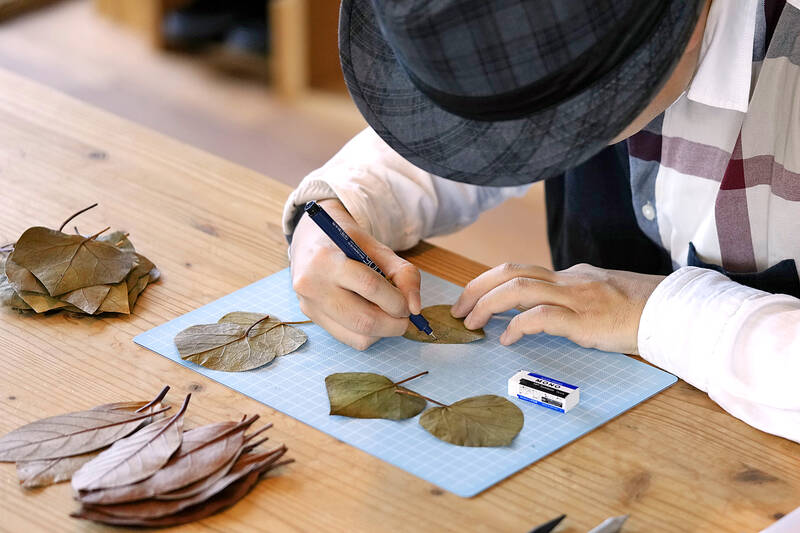
Photo: AP
“If I can make people happy by doing what I am doing, I want to do more. That’s my driving force for what’s next,” Lito says.
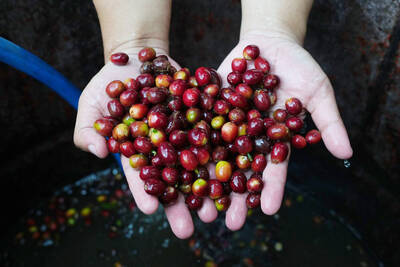
Climate change, political headwinds and diverging market dynamics around the world have pushed coffee prices to fresh records, jacking up the cost of your everyday brew or a barista’s signature macchiato. While the current hot streak may calm down in the coming months, experts and industry insiders expect volatility will remain the watchword, giving little visibility for producers — two-thirds of whom farm parcels of less than one hectare. METEORIC RISE The price of arabica beans listed in New York surged by 90 percent last year, smashing on Dec. 10 a record dating from 1977 — US$3.48 per pound. Robusta prices have
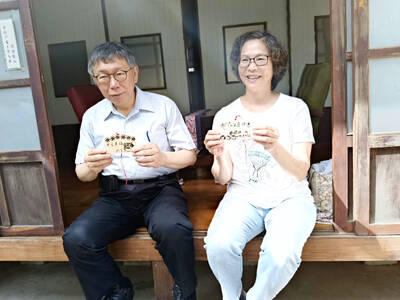
The resignation of Taiwan People’s Party (TPP) co-founder Ko Wen-je (柯文哲) as party chair on Jan. 1 has led to an interesting battle between two leading party figures, Huang Kuo-chang (黃國昌) and Tsai Pi-ru (蔡壁如). For years the party has been a one-man show, but with Ko being held incommunicado while on trial for corruption, the new chair’s leadership could be make or break for the young party. Not only are the two very different in style, their backgrounds are very different. Tsai is a co-founder of the TPP and has been with Ko from the very beginning. Huang has
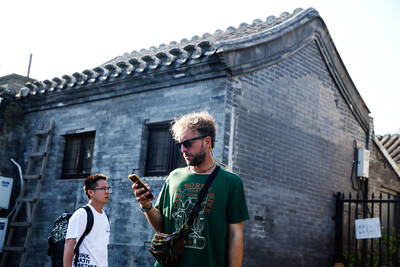
A few years ago, getting a visa to visit China was a “ball ache,” says Kate Murray. The Australian was going for a four-day trade show, but the visa required a formal invitation from the organizers and what felt like “a thousand forms.” “They wanted so many details about your life and personal life,” she tells the Guardian. “The paperwork was bonkers.” But were she to go back again now, Murray could just jump on the plane. Australians are among citizens of almost 40 countries for which China now waives visas for business, tourism or family visits for up to four weeks. It’s
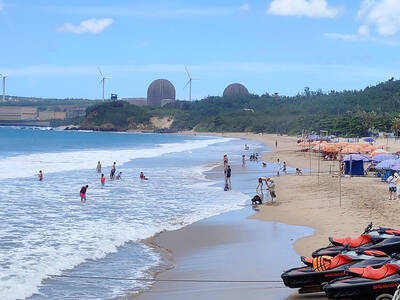
A dozen excited 10-year-olds are bouncing in their chairs. The small classroom’s walls are lined with racks of wetsuits and water equipment, and decorated with posters of turtles. But the students’ eyes are trained on their teacher, Tseng Ching-ming, describing the currents and sea conditions at nearby Banana Bay, where they’ll soon be going. “Today you have one mission: to take off your equipment and float in the water,” he says. Some of the kids grin, nervously. They don’t know it, but the students from Kenting-Eluan elementary school on Taiwan’s southernmost point, are rare among their peers and predecessors. Despite most of